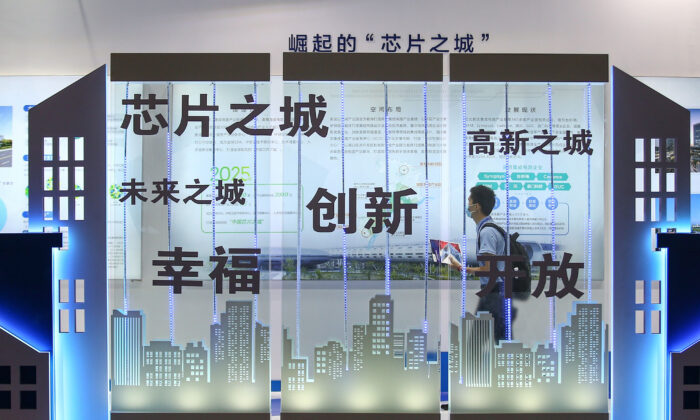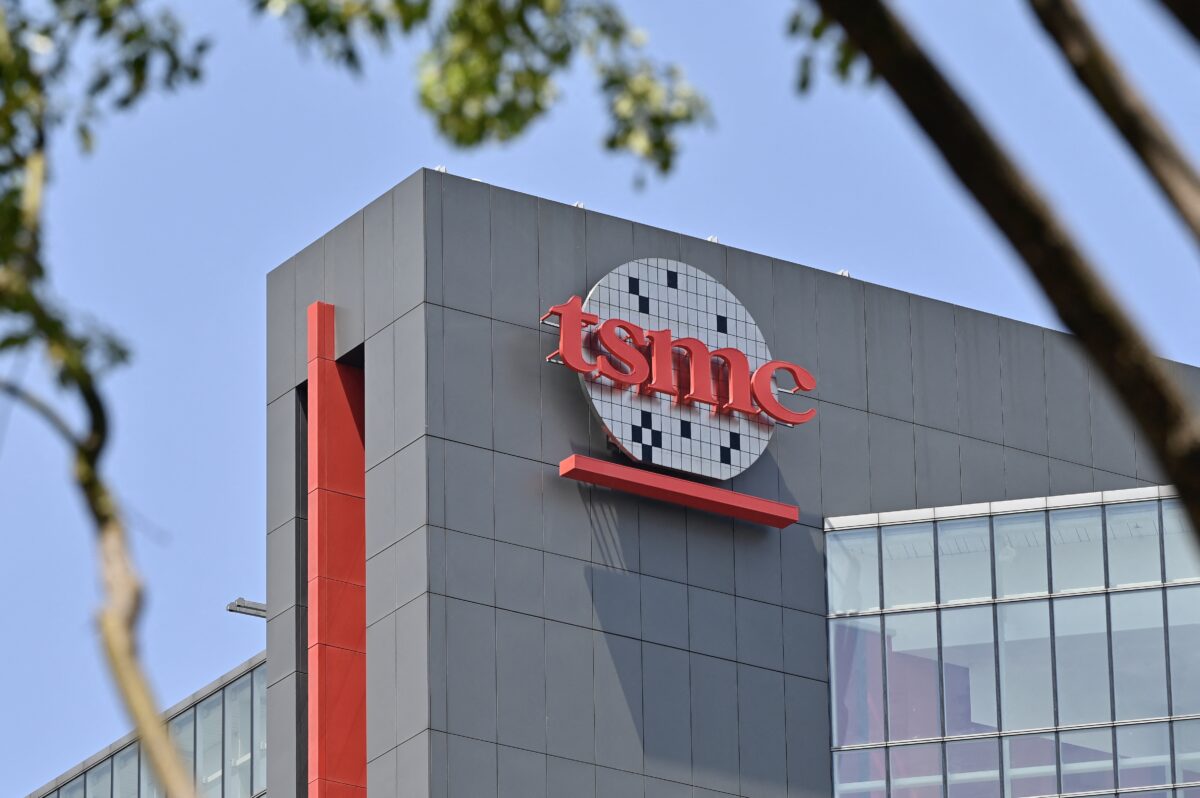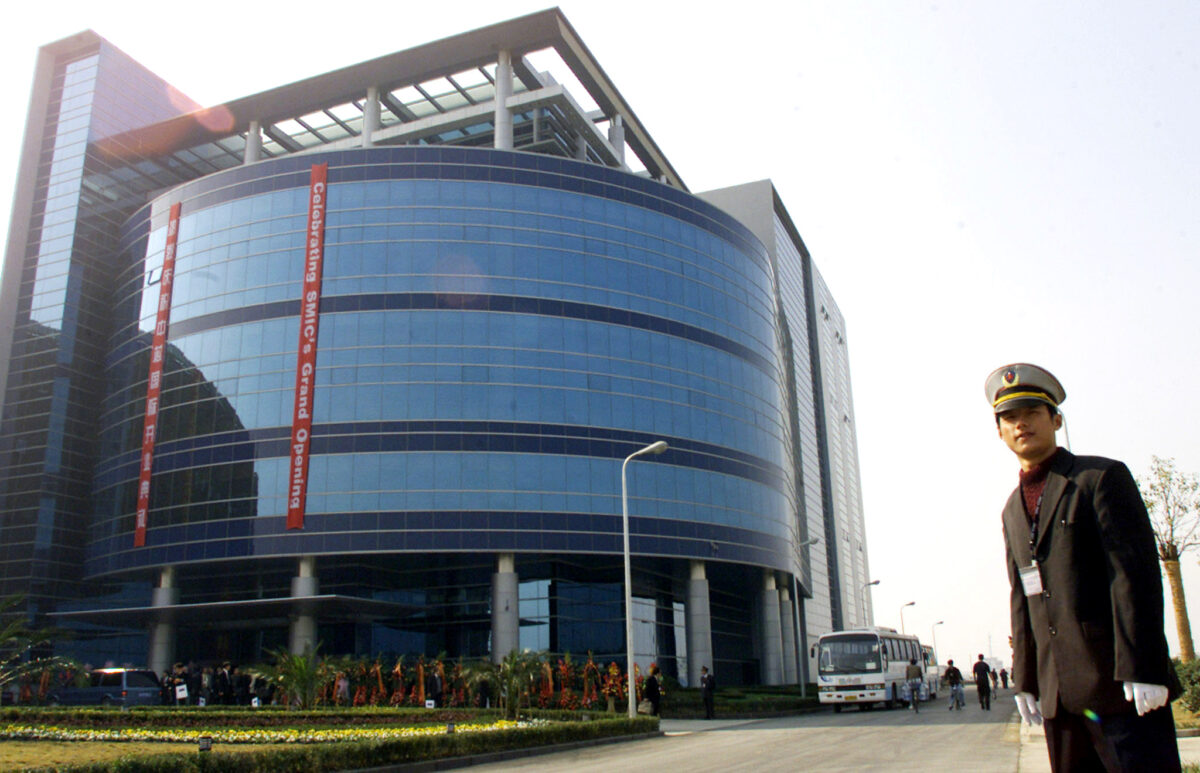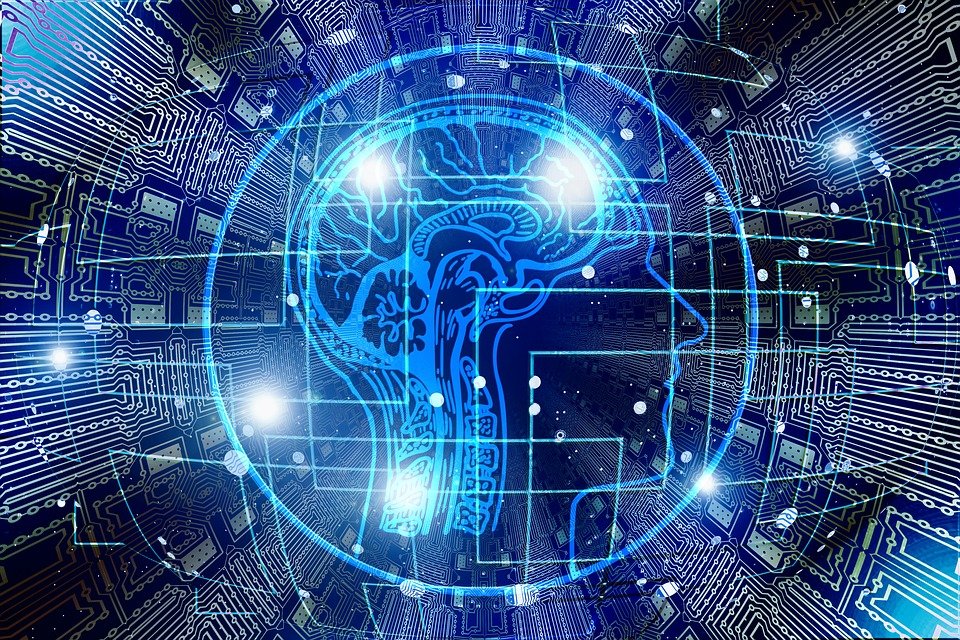
Advisory: Be careful of what you read on social media. The algorithms used by these platforms have no regard for Biblical truth. They target your emotions to keep you engaged on their site so their advertisers can drop more ads. These platforms exist to enrich their stockholders. Consider God’s promise to Believers in James 1:5, “If any of you lacks wisdom, you should ask God, who gives generously to all without finding fault, and it will be given to you.”
Featured Story

As technology continues to innovate, nations become more advanced and more dangerous. China is set on exalting itself on the highest pedestal on the world stage. And it can’t carry out its promises of world domination without continuing its technological innovation. Semiconductor shortages have given us a glimpse at the sheer speed of the tech race, especially amid the COVID crisis.
Semiconductors are at the heart of the U.S.-China competition for tech supremacy. They are expensive and critical, and the Chinese regime has vowed to outspend the United States by almost 50 to 1 in developing semiconductors.
Semiconductors, or “chips,” are an integral component of the technological products, which drive a country’s economic development. They are generally made of nano-sized (one-billionth sized) crystals, the most common of which is silicon. Also called silicon wafers, semiconductors are thinner than a single strand of human hair and contain as many as 40 billion components.
Only a small number of firms are capable of producing the highest quality semiconductors, which are incredibly complex. In addition to requiring advanced scientific knowledge, their manufacture is also extremely capital intensive—semiconductors are very expensive to develop and produce.
Integrated circuits (ICs), which are made up of semiconductor material, are used in consumer electronics, including computers, mobile phones/smartphones, digital cameras, data center servers, televisions, washing machines, refrigerators, cars, and gaming consoles.
Semiconductors are also critical for military and defense hardware, and used in telecommunications, missile guidance systems, navigation systems, weapons simulators, range finding devices, and proximity fuses. The U.S. Defense Advanced Research Projects Agency (DARPA), which is responsible for the development of emerging technologies used for national defense, needs semiconductors for its electronic warfare programs.
China is the primary rival of the United States in the battle for semiconductors. The Chinese Communist Party’s (CCP) 14th five-year plan called for autonomy in semiconductor production. Shortly after the plan’s release, Chinese Premier Li Keqiang identified investments in core technologies, including chips, AI, and 5G, as a way of catching up with the United States.
The CCP is pumping money into the purchase of weapons, as well as research and development of semiconductors and advanced technology, to modernize its military. The United States, on the other hand, has drastically cut its research and development budget since the end of the Cold War with the Soviet Union.
Over the past 20 years, Chinese chipmakers have received over $50 billion in government subsidies. Consequently, in 2019, China’s chip exports hit $101 billion. The CCP has established a $58 billion semiconductor investment fund, while local governments have pledged an additional $60 billion. Additionally, semiconductor companies are provided with a 10-year corporate tax exemption.
The Chinese regime also acquires chipmakers and poaches talent away from foreign chip developers, particularly from Taiwan. Furthermore, Beijing offers subsidies and incentives to lure foreign chipmakers to relocate to China.
Taiwan is a world leader in semiconductors—responsible for 63 percent of the global market. The CCP will do almost anything to obtain talent and technology from the island nation. The reoccurring cyberattacks on Taiwan are an example of the lengths the CCP will go to, in order to steal Taiwanese chip technology. In response, four Taiwanese members of parliament, representing the Democratic Progressive Party (DPP), have proposed tightening the country’s commercial secrets law to prevent the CCP from obtaining Taiwanese semiconductor technology or human capital. The four lawmakers said that Beijing’s interest in stealing Taiwanese technology was not only financially motivated, but was also an attempt to make Taiwan poor and weak, and more susceptible to coercion.

China had some success with developing its own semiconductors. AI chips used in cloud computing have been developed by Alibaba. Huawei’s Kirin chip, which is used for 5G equipment and smartphones, is said to be as good as comparable chips made by Samsung and Qualcomm.
But China is still behind the United States in terms of chip manufacture. Huawei’s Kirin chipsets are actually manufactured by a Taiwanese company, Taiwan Semiconductor Manufacturing Corporation (TSMC), which uses American technology.
TSMC is the world’s leading firm, accounting for 54 percent of global semiconductors. Miniaturization is one of the most important aspects of chip development, and TSMC is presently working on a 3-nanometer (nm) production process. The company also hopes to have 2-nm chips available by 2025.
China’s largest chipmaker, state-owned Semiconductor Manufacturing International Corporation (SMIC), by comparison, only began producing 14-nm chips at the end of 2019, leaving China two generations behind the industry leaders.

According to the Center for Strategic and International Studies (CSIS), it will take China at least 10 years to catch up with the United States in chipmaking. CSIS said that the time frame could be extended if the United States cut off China’s access to technology and financing. CSIS recommends the United States to block exports of semiconductors and semiconductor manufacturing equipment, and prevent China from purchasing chips made with U.S. equipment and from acquiring U.S. chipmaking companies.
The United States has taken a number of steps to protect U.S. semiconductor technology and to slow China’s advance. The National Security Commission on Artificial Intelligence (NSCAI) has recommended strengthening U.S. legislation in order to prevent China from obtaining semiconductor technology. Washington has already placed sanctions on China’s SMIC because its chips had military applications.
On the domestic front, CSIS felt it was defense critical for the U.S. government to invest in chipmakers. And this is what the United States is doing. The Creating Helpful Incentives to Produce Semiconductors (CHIPS) for America Act was a bill proposed in Congress to restore American leadership in semiconductor manufacturing, a goal which could be achieved by providing long-term economic incentives for research and development. Among other funding provisions, this bill called for the creation of a $10 billion fund to encourage investments in semiconductor manufacturing facilities.
The CHIPS bill was incorporated into the National Defense Authorization Act. It created a National Semiconductor Technology Center, which provides funding for private sector research and development. NSCAI has proposed $35 billion in grants and funding for chip research and manufacture. This is in addition to $37 billion already promised by President Joe Biden.
The CCP has vowed to outspend the United States 50 to 1 in developing semiconductors, but the United States is a much richer country. In 2019, the CCP imported $300 billion in computer chips, which is more than it spent on oil. The semiconductor war is looking very much like the military spending escalations of the Cold War with Russia.
The U.S seemingly has the upper hand in the semiconductor race however considering they beat China to Greenlands mineral resources. BlueJay Mining Co. is responsible for extracting the precious minerals necessary to fuel the huge wave of technological innovation.
Source: EpochTimes

Billionaires including Jeff Bezos, Michael Bloomberg, Richard Branson, etc. have banded together to purchase 900,000 square kilometers off the coast of west Greenland. Which is one of the last places to be prospected and mined for valuable minerals on earth. Bluejay Mining Co. has partnered with a company called KoBold Metals to revolutionize exploration geoscience. Kobold Metals is bringing Artificial intelligence into the equation to precisely identify ore deposits off the western shelf of Greenland.
According to Cambridge University press, researchers have discovered lithium deposits in Greenland ice cores (glaciers) measured by ion chromatography. Which is a convenient solution to the current lithium shortage for electric vehicle batteries. To pursue a climate change agenda, every single car on the road must be electric. So you can expect Bluejay Mining to do very well for itself in the next few years. Considering they’ll be finding various other precious metals & gems.
Breakthrough Energy, introduce themselves on their website by identifying as “a group of investors who are working together in a fund that is patient, flexible, and committed to the guiding principles of Breakthrough Energy – including supporting net-zero emissions technology and ensuring affordable, reliable, and clean energy for all.” Their board of investors is comprised of Twenty-eight billionaires, many whom you’ve heard of. One that stood out to me was a company called SOHO China.
They’re a Chinese building developer, primarily in the office and commercial sector, with some residential and mixed-use properties in its portfolio. The company, which uses the name “SOHO” in both English and Chinese contexts, was founded in 1995 by Chairman Pan Shiyi and CEO Zhang Xin. The name SOHO comes from the phrase “Smart Office, Home Office” as the company decided to combine office rooms and residential apartments in the same building to facilitate a comfortable and productive environment. The company has developed over five million square meters of commercial properties, And still holds 1.4 million square meters of office space in Beijing and Shanghai for long-term investment.

Who is Bluejay Mining?
So clearly there are some very deep pockets leaning into this project. Only one of the two companies carrying out the project required funding from Breakthrough Energy. But Bluejay Mining was self sufficient and retains the ability to self-fund to maintain a 49% ownership through to production, providing external public investors with the opportunity of investing alongside a private investment entity of this magnitude.
“It is focused on advancing its primary Dundas Ilmenite Project in Greenland, the world’s most significant, highest grade mineral sand ilmenite deposit, into production in the near term and driving value through the development of its other large scale high grade projects providing exposure to commodities including nickel, copper, lead zinc and platinum.”
Bluejay currently has four projects in Greenland, which it is actively developing. The Company believes that Greenland represents one of the last underexplored mineral regions that has the potential to contain globally significant resources. This is essential to provide the next wave of technological innovation.

So who’s KoBold?
KoBold is applying modern artificial intelligence and cloud computing technology to predict the composition of the subsurface. Their data platform, TerraShed, aggregates and structures vast collections of scientific data and makes it rapidly available for analysis. And their suite of algorithms, Machine Prospector, interrogates that data with a range of techniques—from ensemble machine learning, to full-physics joint inversions, to computer vision—to predict the composition of the subsurface in a statistically valid manner.
KoBold Metals is privately held and backed by investors committed to the long-term development of new battery metal resources. Their principal investors are Breakthrough Energy Ventures, a climate technology fund overseen by Bill Gates, Jeff Bezos, and other global business leaders; Andreessen Horowitz, the premier Silicon Valley venture capital fund; and Equinor, the Norwegian state oil company.

How does it apply to the 4th industrial revolution?
New home office working conditions and increased home time led to a growth of 26.1% of traditional computer sales during the last quarter of 2020 – and thus, to the demand exceeding the production. In addition, the pandemic caused a fluctuating demand from the industry: some tech companies overstocked chips in advance, while others couldn’t acquire any. Many others, especially car companies, canceled chip orders, fearing that the industry was going to take a hit, so manufacturers adapted to the situation by switching their production to chips for consumer products.
Unfortunately, things didn’t stop there: a winter storm pushed Texas semiconductor factories to shut down, while a fire in Japan’s Renesas plant caused delays – and this is where nearly one-third of the car chips used worldwide are produced.
Another cause could be the trade war between the United States and China. Restrictions placed on Semiconductor Manufacturing International Corporation (SMIC) pushed companies to rely on Taiwan Semiconductor Manufacturing Company Limited (TSMC) and Samsung but those manufacturers had already been working at their full capacity.
Conveniently enough, there’s political tension between China and Taiwan. So something has to give, and that’s the Disko project. This project will be more than self sufficient in terms of solving the chip shortage. In fact, it is in my firm belief that we’re about to be exposed to a whole new wave of technological innovation. With Mark Zuckerberg’s pivot to the MetaVerse, I think a dystopian technocracy is right around the corner. From the looks it, the list of investors is telling me this will be implemented globally.
The electronic tyranny of technocracy that is now being developed and implemented throughout the world is in preparation for the Antichrist’s rise to power. As we see this final empire taking shape in our day, we can know for certain that the End Times is upon us and the Coming of Christ is drawing near. Now is the time to take yourself off autopilot, turn inward and find Jesus. Stay inquisitive in the word of God, and the world around you.

Tagged In
Newsletter
Must Read




Other Sources

Latest News
Watchman: Rumble Defies Global Censorship Trends, Takes Stand Against New Zealand’s Free Speech Crackdown
HNewsWire: The CEO of Rumble, a free-speech YouTube competitor, says that global censorship levels are on the rise, but that what’s particularly noticeable are censorship…
Read MoreTwitter Is Suppressing Free Speech Under the Direct Orders of the Government. So What Else Is the Government Hiding?
HNewsWire: After a cache of papers detailing Twitter’s censoring efforts before the 2020 presidential election was released, CEO Elon Musk implied that the company was working…
Read MoreWatchman: Once Satan’s Soldiers Eliminate Free Speech, Life Becomes a Cheap Ruse—Brazil Imprisons a Conservative Congressman for Eight Years Over a YouTube Video, America Is Next, Google Is Evil and Tribulation On Steroids
True Tyranny Always Begins With the Censoring of Free Speech, As U.S. Founding Dad Benjamin Franklin said, “Man will ultimately be governed by God or…
Read MoreWatchman: At Some Point, You’re Going to Realize That Twitter Is Just Like Fox News, Which Has Turned On Its Conservative and Christian Audience. Mr. Musk Is a Globalist and Satan Worshiper, and He Has Misled You Into Thinking That Twitter Belongs to the Free Speech Audience. Not True…
SRH: Linda Yaccarino Was Employed by the Biden Administration From 2021 to 2022 and Subsequently Joined the WEF in 2019. Was the Appointment of the……...
Read MoreWatchman’s Daily Devotional, A Lie Is Offered to Those Who Will Not Love the Truth. Truth-Seekers Face Constant Opposition Until They Choose to Reject the Last Lies
Daily Devotional: 2 Thessalonians 2:9-11 9The coming of the lawless one will be in accordance with the work of Satan displayed in all kinds of…
Read More

We make every effort to acknowledge sources used in our news articles. In a few cases, the sources were lost due to a technological glitch. If you believe we have not given sufficient credit for your source material, please contact us, and we will be more than happy to link to your article.




